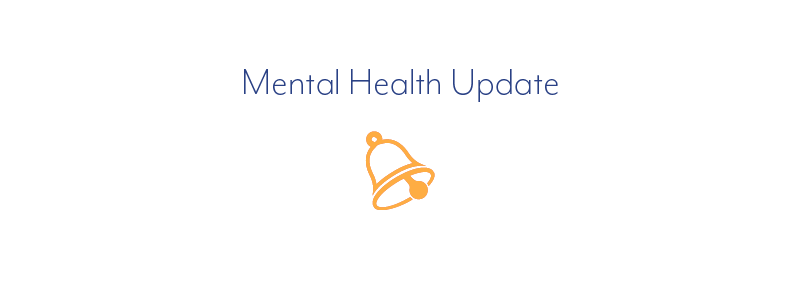Mental Health Update

Mental health and learning loss funds available to schools
To follow up from Governor Hochul’s announcement yesterday, MHANYS has a dedicated series of resources that responds to the needs of young people in schools with mental health concerns, school administrators, teachers and other school personnel. We also hold a series of webinars, trainings and panel discussions throughout the year. To get more information, go to www.mentalhealthednys.org
https://www.timesunion.com/state/article/mental-health-learning-loss-funds-available-18276709.php
Mental health, learning loss resources available to schools
Hochul rolls out $108 million in funding to address educational crisis
Aug. 3, 2023 Updated: Aug. 3, 2023 4:29 p.m.
ALBANY — Gov. Kathy Hochul rolled out $108 million in funding for New York schools to invest in mental health services for students who have experienced learning loss during the COVID-19 pandemic.
In an announcement Thursday at the State Education Building, the governor painted a dire scene if schools went without the funds: not only continued decline in reading and math, but also an increased need for significant mental health services — or even a higher risk of self-harm.
“If we don’t give (young people) support now, it’ll be irreversible,” Hochul said. “We are setting them up for a lifetime of dependency.”
The governor spoke in the vaulted lobby across the street from the Capitol — the first time in decades a governor spoke in the ornate building after years of friction between the Executive Chamber and the independent agency. The list of speakers also featured representatives of the New York State United Teachers union, which has at times battled both public offices.
“Together we know we can do great things in partnership with the governor,” state Education Commissioner Betty A. Rosa said. “We can provide innovative resources to meet student needs in these unprecedented times.”
The funding, split over the next two school years, is intended to make its way to publicly funded schools as soon as possible. Nearly all of it will go directly to school districts and boards of cooperative educational services (BOCES).
“Why can’t New York be a national model in solving this crisis?” Hochul asked.
Applications for the first $50 million round of grant funding closes Aug. 18, although the final deadline for submissions is Oct. 5.
The funding will be split evenly between mental health services and programs to address learning loss, with the majority (60 percent) going to schools outside New York City.
Each applicant is eligible for up to $1,200 per student per program year — but all applicants will be expected to match the grant funds delivered. If a school district receives $25,000 from the state for the year, it would also have to put up its own $25,000 for the services.
Hochul said she believes the need is highest in communities where COVID took its greatest toll, including urban areas that are often under-resourced and include large numbers of people of color.
The money is intended to help hire mental health counselors who would be based in schools. Hochul described a story she heard from a student in the Bronx where there was one guidance counselor for 700 students and a months-long waiting list to be seen.
“We’re going to fix this,” Hochul said. “We’re not going to abandon you.”
Hochul described the effects of the COVID-19 pandemic on educational attainment as something “no one could’ve predicted.”
States hit hard by COVID-19 after its initial heavy toll in New York were more hesitant to shut down in-person learning due to concern over educational loss.
Florida, notably, generally kept classrooms open more often than in New York. But the southern state’s older population would go on to have more deaths attributed to the coronavirus than New York did.
The governor’s comments came a day after a New York Times story painted the state as falling behind the rest of the nation in supporting literacy rates.